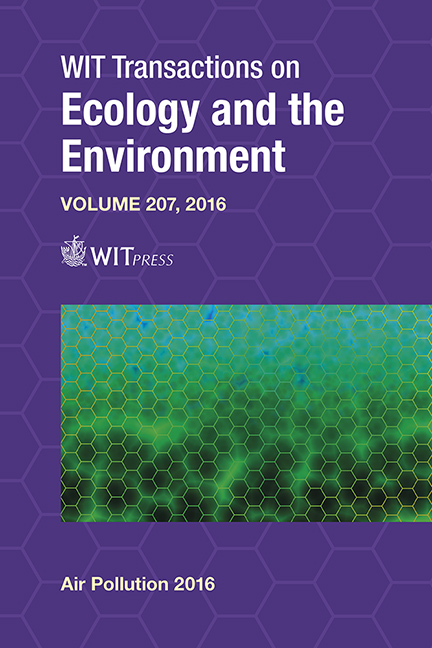Study Of The Airborne Behavior Of Cedar Pollen And Its Allergen Released From Cedar Forests In The Kanto Plain Of Japan
Price
Free (open access)
Transaction
Volume
207
Pages
13
Page Range
181 - 193
Published
2016
Size
500 kb
Paper DOI
10.2495/AIR160171
Copyright
WIT Press
Author(s)
Q. Wang, G. Otsuka, S. Lu, Y. Takai, S. Dong, M. Suzuki, D. Nakajima, K. Sekiguchi, M. Miwa
Abstract
In recent years, pollinosis has been considered a “national disease” with the big social problems in urban areas of Japan. In this study, the airborne behavior of cedar pollen in the Kanto plain of Japan was observed by a real time pollen automatic measuring instrument during the 2014 pollination season. For calculating cedar pollen source contribution, the backward trajectory analysis was used for calculating 72 hours of trajectories of air mass with the altitude of 500 m from the urban of Saitama city to different areas. It was found that cedar pollen grains transported to Saitama city were mainly derived from the forest of Gunma prefecture located on the north side of Saitama city and the forest of Kanagawa prefecture located on the south side of the city. Transportation of cedar pollen grains depends on the weather conditions, habitat density of cedar trees and transportation distance. The variations in daily pollen counts among different transporting times showed three pollen dispersal peaks observed in the morning, the day time and the night time, while these occurrence rates were different in each month. The peak pollen counts in the day time correlated positively with the daily maximum temperature. The highest pollen counts were observed in the night time within three pollen dispersal peaks. At the same time, the size-segregated allergenic particles were also collected using Andersen high-volume air samplers at the roadside of urban residential zones of Saitama city and on the 10th floor of the research building in Saitama University. Allergenic concentrations were measured by the surface plasmon resonance method with a Biacore J system. The highest airborne allergenic concentrations were observed in fine particles below 1.1 μm. Moreover, the forward trajectory analysis was used for calculating 72 hours of trajectories of air mass with the altitude of 500 m from different cedar pollen source areas including the rainfall events. It was suggested that not only cedar pollen grains but also its allergenic particles were transported from different cedar forests as the source areas.
Keywords
Japanese cedar pollinosis, Cryptomeria japonica pollen, allergenic particles, source contribution





